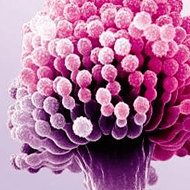Phospholipid Powder Customization,factors affecting absorption and utilization
Time:2025-04-09Many components in the feed will have an impact on the absorption and utilization of phospholipids. The following are some common components and their mechanisms of action:
I. Protein
Protein can form lipoprotein complexes with phospholipids, which helps with the dissolution and transportation of phospholipids in the intestine, thus promoting their absorption. For example, adding an appropriate amount of high-quality protein sources such as fish meal and soybean meal to the feed can improve the absorption efficiency of animals for phospholipids.
Proteins from different sources may have different effects on the absorption of phospholipids. There are differences in the amino acid composition and structure between animal proteins and plant proteins, and their interactions with phospholipids also vary. Generally speaking, the amino acid composition of animal proteins is closer to the nutritional needs of animals, and it may have a better effect in promoting the absorption of phospholipids, but this also varies depending on the animal species and physiological status.
II. Fat
An appropriate amount of fat is conducive to the absorption of phospholipids because phospholipids and fat will jointly form mixed micelles during the digestion process, promoting the dissolution and absorption of phospholipids in the intestine. For example, adding an appropriate amount of fat sources such as fish oil and vegetable oil to the feed can improve the absorption and utilization rate of phospholipids.
However, an excessive amount of fat may have a negative impact on the absorption of phospholipids. Too much fat will make the fat content in the intestine too high, which may lead to changes in the composition and structure of mixed micelles, affecting the contact between phospholipids and intestinal mucosal cells, and thus reducing the absorption efficiency of phospholipids.
III. Carbohydrates
Carbohydrates can provide energy for animals, ensuring the normal physiological functions and digestion and absorption capabilities of animals, and indirectly affecting the absorption and utilization of phospholipids. If the content of carbohydrates in the feed is insufficient, animals may use the fat and protein in their bodies to provide energy, thus affecting the metabolism and utilization of phospholipids.
Different types of carbohydrates also have different effects on the absorption of phospholipids. Digestible carbohydrates such as starch can quickly provide energy, which is beneficial for maintaining the digestive function of animals and promoting the absorption of phospholipids. Some indigestible carbohydrates such as dietary fiber, when present in an appropriate amount, can promote intestinal peristalsis, which is beneficial for the contact between nutrients such as phospholipids and the intestinal mucosa. However, an excessive amount may adsorb phospholipids and hinder their absorption.
IV. Minerals
Certain mineral ions such as calcium and magnesium may combine with phospholipids to form insoluble complexes, affecting the solubility and absorption of phospholipids in the intestine. For example, when the calcium content in the feed is too high, it may combine with the phosphate groups in phospholipids to form calcium phosphate precipitation, reducing the absorption and utilization rate of phospholipids.
Some trace elements such as zinc and iron are components or activators of various enzymes in animals and participate in the metabolic process of phospholipids. An appropriate amount of trace elements such as zinc and iron helps to maintain the activity of enzymes related to phospholipid metabolism in animals, promoting the absorption, transportation, and utilization of phospholipids.
V. Vitamins
Fat-soluble vitamins such as vitamins A, D, and E are closely related to the absorption and utilization of phospholipids. Vitamin A can maintain the integrity of the intestinal mucosa and promote the absorption of nutrients such as phospholipids by the intestine; vitamin D helps with the absorption and utilization of minerals such as calcium and phosphorus, indirectly affecting the metabolism of phospholipids; vitamin E is an antioxidant that can protect phospholipids from oxidative damage, improve the stability and biological activity of phospholipids, and promote their utilization in animals.
Water-soluble vitamins such as B vitamins participate in the energy metabolism and material metabolism processes in animals. Among them, vitamins B1, B2, and B6 are closely related to the synthesis and metabolism of phospholipids. A deficiency of these vitamins may affect the synthesis and transportation of phospholipids, and thus affect their absorption and utilization.


 CN
CN





